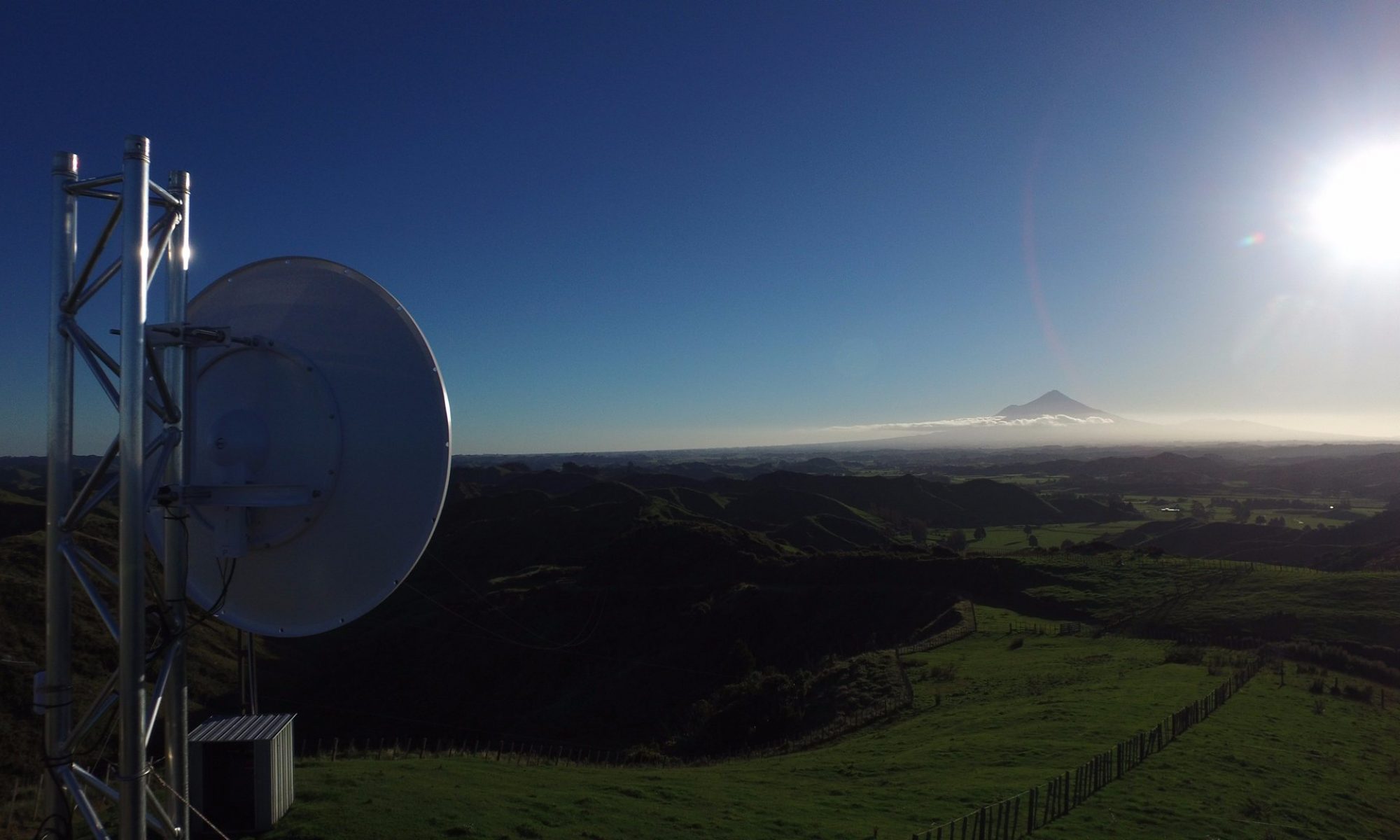Spectrum Matters
A MESSAGE FROM THE WISPA-NZ PRESIDENT
Throughout rural New Zealand around 70,000 businesses and homes currently receive reliable, affordable broadband through Wireless Internet Service Providers, or WISPs. This number is increasing daily.
WISPs connect these users to the world at city speeds and prices. The regions and individuals benefit hugely through more efficient businesses, new technology, kids doing homework online, and full social inclusion.
Their broadband is enabled by radio spectrum allocated for this purpose. That spectrum is now under threat. There’s a real risk of the government reallocating some of the spectrum that WISPs are currently using efficiently for our rural customers, so the big mobile phone companies can use it for 5G – a next generation technology still under development. And despite all the hype, 5G might not come to rural areas for a decade. If ever.
New Zealand’s mobile phone companies are campaigning massively to hype up the potential of 5G. We see hundreds of TV advertisements and media articles promoting it – way before it is ready for market.
Why? Because the mobile companies want to persuade the government that spectrum that was previously allocated for rural WISP services, should now be handed over for their use. Yet they will use it predominantly, if not exclusively, for urban customers.
The mobile companies are big businesses and have immense resources which they are not hesitant to use. WISPs are tiny by comparison. Our interests, and those of our 70,000 mainly rural customers are at risk of being bowled over in the spectrum rush.
For sure, 5G will be a step forward – just as 2G, 3G and 4G have been in their day. But as history shows in New Zealand and globally, mobile phone companies focus on densely populated big cities. Rural areas come a very poor second. And the time from the talking up until the arrival of the technology in rural areas has always been way longer than the companies predict. Don’t expect to see fleets of 5G-connected driverless cars in Fairlie or Hawera any time soon.
WISPs have shown that they can, and do, connect rural areas rapidly, efficiently and affordably. Spectrum is critical to our continuing to operate.
We need your support to make sure we retain use of it.
Mike Smith
President, Wireless Internet Service Providers Association of NZ
(WISPA.NZ)
The Issue And The Trade-offs
Radio frequency allocation is a complex business. Different frequencies are used for a wide range of purposes – aeronautical and marine communications, public broadcasting, garage door openers, radio telephone systems, telecommunications, meteorology, astronomy, GPS, and your home TV remote to name a few.
The high-level decisions about what frequency is assigned for what purpose are made globally by the International Telecommunications Union of which New Zealand is a member. Equipment manufacturers and users also have a say in the umbrella global decisions.
The day to day details are the responsibility of individual countries. In our case the Minister of Communications has the final say. The detailed work is done by the Radio Spectrum Management branch of MBIE, the Ministry of Business, Innovation and Employment.
There are several categories of spectrum available to WISPs – both licensed spectrum and unlicensed or “General User” spectrum which is shared with a range of users and largely self-managed under a general set of rules. The current system works very well – in connecting our base of 70,000 customers and growing, spectrum availability has seldom been a constraint.
But the prospect of significant parts of the spectrum being transferred from WISP and related users to mobile companies is a serious threat. A threat to WISPs and also to our customers.
Every radio user – cellular, WISPs or otherwise – would like more spectrum. That’s human nature and business sense. In general, more spectrum means there is less potential for interference, so engineers have greater flexibility in how the network is planned. Less spectrum requires that networks be more tightly engineered. Sometimes a shortage of spectrum limits the number of users that can be serviced from a specific tower.
For WISPs less spectrum could mean having to either incur the cost of a whole lot of additional towers to service the current customer base, or discontinue service to some customers completely.
That’s why WISPA.NZ is calling for a lot more thought and public debate before any existing spectrum is removed from WISPs and handed, or auctioned, to cellular companies. Rural Internet is at risk.
Whose Spectrum Is It?
Many stakeholders claim a degree of ownership of radio spectrum – service providers who rely on it to deliver a service, end customers who receive a service, and the government which administers the allocation and often receives payment through licence fees or auction.
In the end spectrum is like air – a community asset. Its allocation should not be determined by the bidder with the most money to command an auction process, nor with the loudest voice to talk up services that may never come to many potential users.
It’s also crucial that spectrum is assigned with the use of the community as the prime consideration. It should not be available as a speculative asset to be traded, nor as a competitive tactic to close out smaller suppliers. In the past we have seen major companies pay large sums for blocks of spectrum which they have never used – wasting spectrum in the extreme.
WISPs stand by our track record of using spectrum responsibly, intelligently, and in the interests of the communities we serve.
A specific concern for WISPs is retention of the GURL – General User Radio Licence – which is used effectively and efficiently by most of our members. We especially call on the government to make sure there is full, well-publicised consultation before any changes are made to the GURL regulations to fit a proposed 5G rollout – that is all frequencies from 0 – 300GHz
Rural users in New Zealand have become well-served with broadband compared to many similar countries. That is giving a competitive advantage to our farmers and rural businesses, reducing the “homework divide” so that rural kids can do their homework online, and removing the disadvantage of digital isolation from tens of thousands of rural homes.
WISPA’s message to the government is that this must not be put at risk. WISPs have brought rural New Zealand out of the broadband doldrums. We are connecting hundreds more customers every week. We hope and expect to continue leading rural connectivity for many years ahead.
OUR MESSAGE:
PLEASE DON’T STOP US IN OUR TRACKS.
DON’T WASTE OUR SPECTRUM.
What Can You Do?
- Talk to influencers in your region – your MP, regional/district Council, farming organisation leaders and others to make sure they are aware of this issue.
- Make sure this debate takes place in the open, not behind closed doors.
- Check back here at wispa.nz for updated information and use the contact form to ask any questions.
- Download and share the brochure PDF
- Email wispa@wispa.nz if you would like copies of this leaflet to distribute to others.

